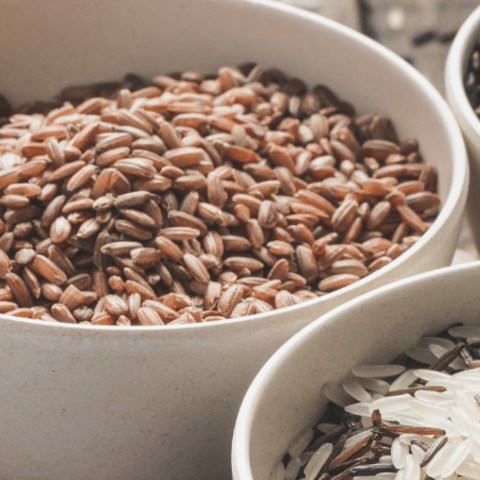
Fat is an essential nutrient for our bodies. It provides energy and helps our digestive system absorb certain vitamins from foods. But what types of fat should you be eating? Are there any you should avoid? Here is some information on the different types of fat:
Saturated Fats
According to the 2020-2025 Dietary Guidelines, we should choose foods that are full of nutrients but limited in saturated fat. Saturated fat raises the levels of LDL cholesterol—the "bad" cholesterol. This in turn raises our risk of heart disease.
Saturated fats occur naturally in many foods such as meat and dairy products. Beef, lamb, pork and poultry (with the skin on) contain saturated fats, as do butter, cream and cheese made from whole or 2% milk. Plant-based foods that contain saturated fats include coconut, coconut oil, palm oil and palm kernel oil. The top sources of saturated fat in the U.S. diet include sandwiches (such as burgers, tacos, and burritos) followed by desserts and sweet snacks.
Unsaturated Fats
Unsaturated fats may help improve blood cholesterol levels when used in place of saturated and trans fats. For a healthier diet, select food with unsaturated fats from plants such as in avocados, olives and walnuts and fish such as in salmon, trout, and herring. Unsaturated oils include canola, olive, safflower, soybean and sunflower oil.
Trans Fats
Trans fat in foods is formed through a manufacturing process that changes a liquid oil into a solid fat at room temperature. Trans fats are of concern because they have been found to raise bad (LDL) cholesterol levels and lower good (HDL) cholesterol levels. Trans fats were typically found in foods like margarine and processed foods. However, since 2015 the U.S. Food and Drug Administration has taken steps to remove artificial trans fats from the food supply. Most trans fats now in food come from the small amounts found naturally in animal products, like meat and butter.
Tips for Choosing Healthy Fats
Read the Nutrition Facts Label for the fat content of a food. To make an informed decision, choose foods with unsaturated fats and little or no saturated or trans-fat. Recipes are a good place to start. Try recipes that use oil instead of butter, shortening, margarine or lard. Other suggestions from MyPlate include:
- Cut back on foods containing saturated fat including desserts and baked goods such as cakes, cookies, donuts, pastries, and croissants.
- Reduced the amount of whole milk and full-fat dairy foods and dairy desserts consumed.
- Build meals around protein foods that are naturally low in saturated fat such as beans, peas, and lentils, as well as soy foods, skinless chicken, seafood, and lean meats.
- Switch from butter or cream cheese on toasted bread or bagels to a nut butter or a spread of avocado with a squeeze of lemon. These spread options contain healthier fats.
- Order baked or steamed options instead of fried foods. A dash of hot sauce or a spoonful of salsa adds flavor without adding fat.
Sources:
Dietary Guidelines for Americans, 2020-2025. 9th Edition. December 2020. United States Department of Agriculture and United States Department of Health and Human Services.
Rethink Fats, MyPlate, United States Department of Agriculture (USDA)
The Skinny on Fats, The American Heart Association
The Skinny on Fat - The Good, The Bad and The Unknown, National Institutes of Health
Trans Fat, Food and Drug Administration (FDA)
This newsletter was reviewed and updated in 2022.
Tags:







